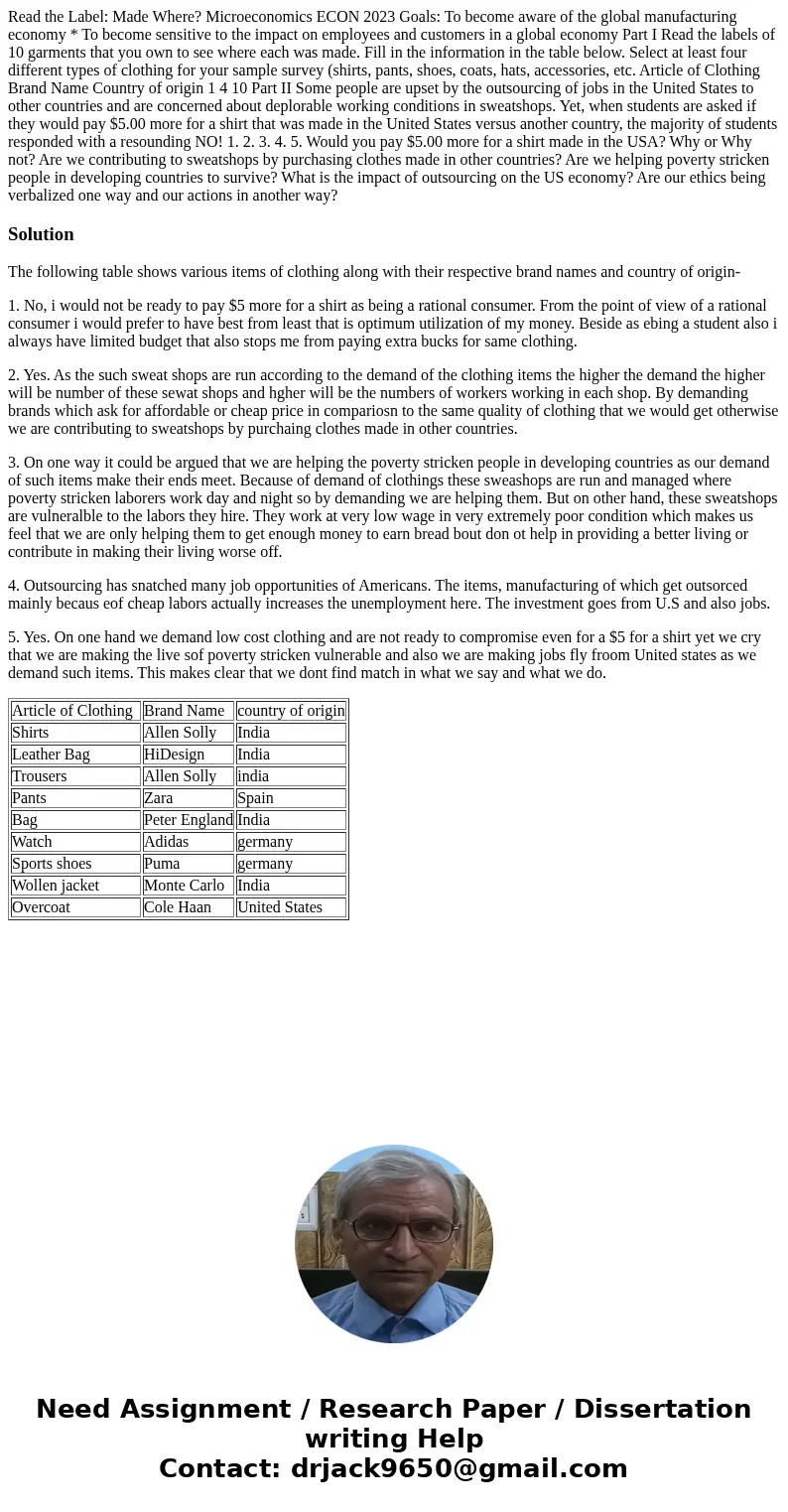Read the Label Made Where Microeconomics ECON 2023 Goals To
Solution
The following table shows various items of clothing along with their respective brand names and country of origin-
1. No, i would not be ready to pay $5 more for a shirt as being a rational consumer. From the point of view of a rational consumer i would prefer to have best from least that is optimum utilization of my money. Beside as ebing a student also i always have limited budget that also stops me from paying extra bucks for same clothing.
2. Yes. As the such sweat shops are run according to the demand of the clothing items the higher the demand the higher will be number of these sewat shops and hgher will be the numbers of workers working in each shop. By demanding brands which ask for affordable or cheap price in compariosn to the same quality of clothing that we would get otherwise we are contributing to sweatshops by purchaing clothes made in other countries.
3. On one way it could be argued that we are helping the poverty stricken people in developing countries as our demand of such items make their ends meet. Because of demand of clothings these sweashops are run and managed where poverty stricken laborers work day and night so by demanding we are helping them. But on other hand, these sweatshops are vulneralble to the labors they hire. They work at very low wage in very extremely poor condition which makes us feel that we are only helping them to get enough money to earn bread bout don ot help in providing a better living or contribute in making their living worse off.
4. Outsourcing has snatched many job opportunities of Americans. The items, manufacturing of which get outsorced mainly becaus eof cheap labors actually increases the unemployment here. The investment goes from U.S and also jobs.
5. Yes. On one hand we demand low cost clothing and are not ready to compromise even for a $5 for a shirt yet we cry that we are making the live sof poverty stricken vulnerable and also we are making jobs fly froom United states as we demand such items. This makes clear that we dont find match in what we say and what we do.
| Article of Clothing | Brand Name | country of origin |
| Shirts | Allen Solly | India |
| Leather Bag | HiDesign | India |
| Trousers | Allen Solly | india |
| Pants | Zara | Spain |
| Bag | Peter England | India |
| Watch | Adidas | germany |
| Sports shoes | Puma | germany |
| Wollen jacket | Monte Carlo | India |
| Overcoat | Cole Haan | United States |

 Homework Sourse
Homework Sourse